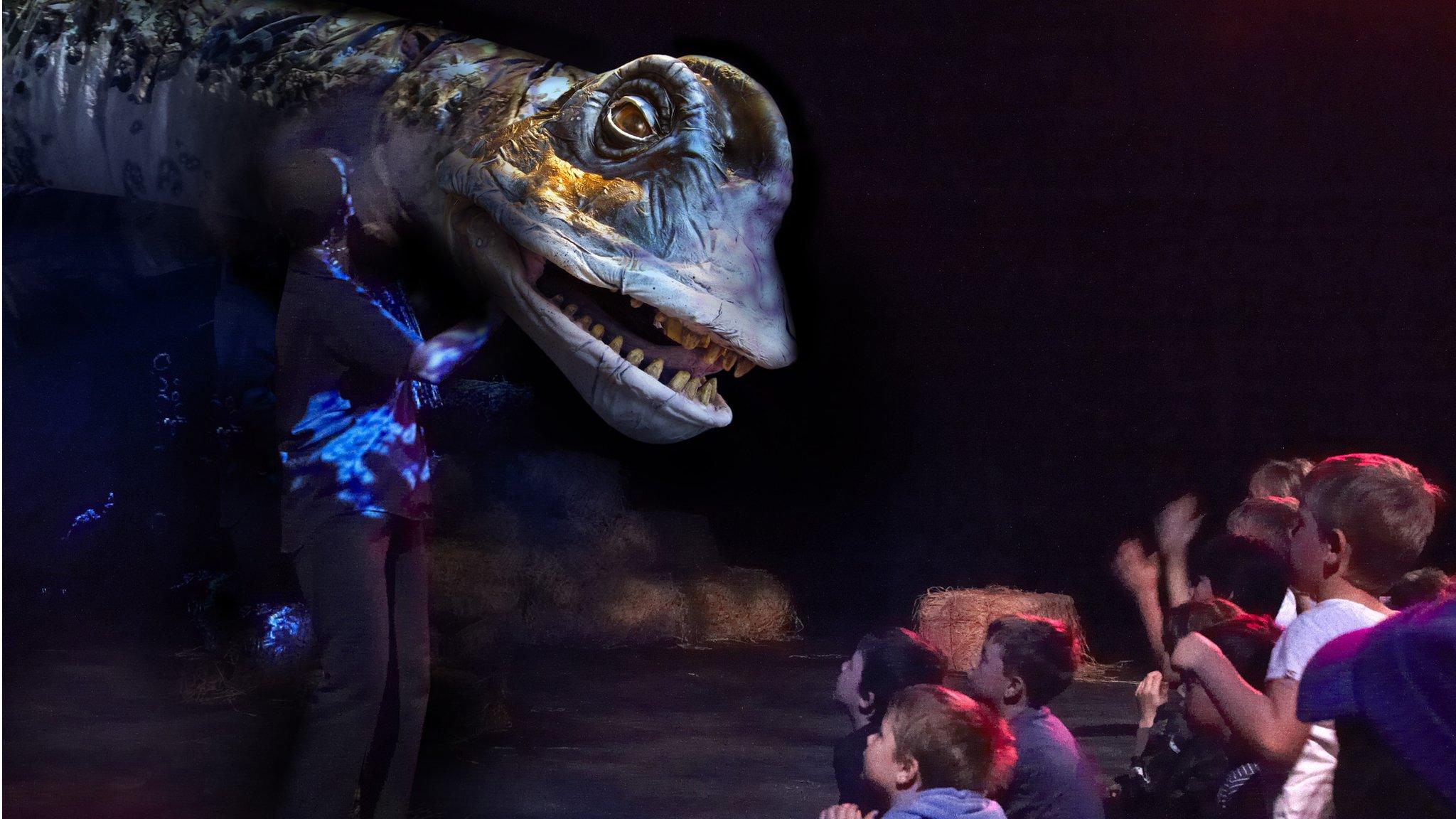Skye's Storr Lochs Monster fossil unveiled in Edinburgh
- Published
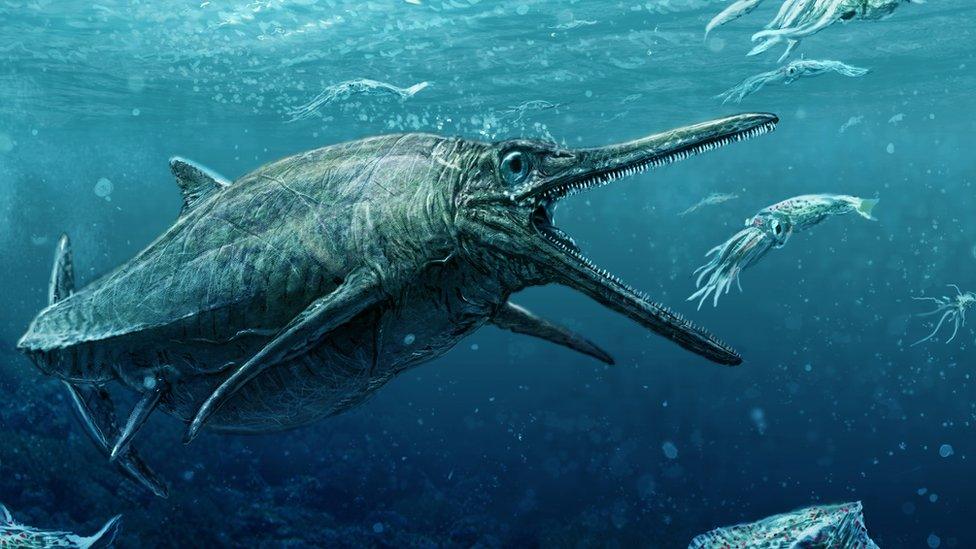
An artist's impression of the Storr Lochs Monster
The fossilised skeleton of a 170 million-year-old Jurassic predator discovered on the Isle of Skye has been unveiled in Edinburgh.
Named the Storr Lochs Monster, the fossil of the sea-living reptile was found in 1966.
Fifty years on from the find, scientists from the University of Edinburgh and National Museums Scotland are preparing a detailed study of it.
It has been identified as being from a family of animals called ichthyosaurs.
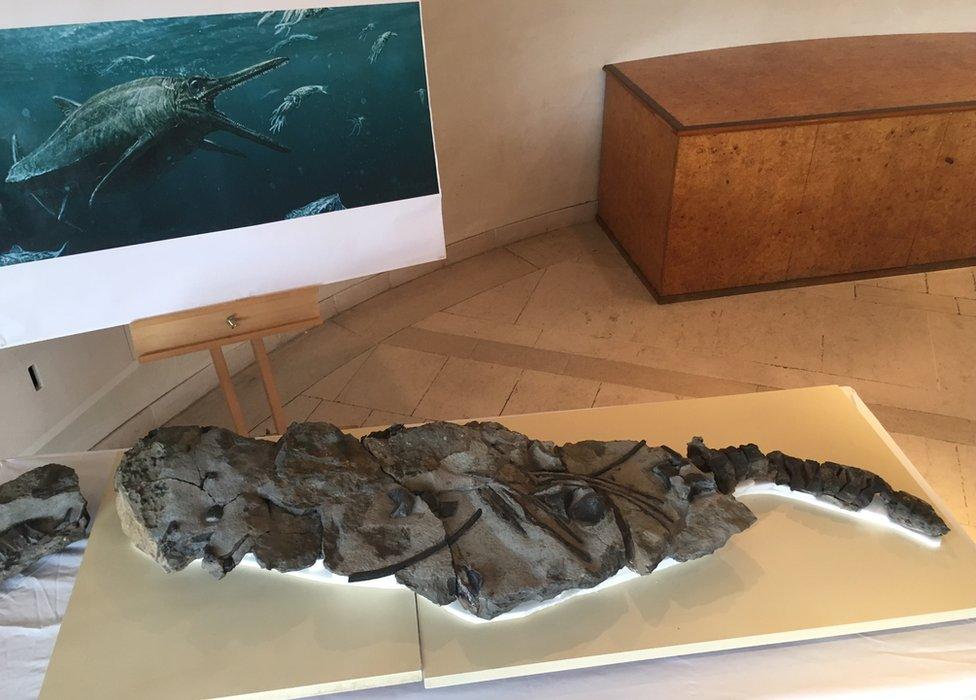
The fossilised skeleton will be analysed by palaeontologists
The ancient reptiles grew to about 4m (13ft) in length and had long, pointed heads filled with hundreds of cone-shaped teeth, which they used to feed on fish and squid.
The Storr Lochs Monster is the most complete skeleton of a sea-living reptile from the "Age of Dinosaurs" that has ever been found in Scotland, the researchers said.
Skye is one of the few places in the world where fossils from the Middle Jurassic Period can be found.
The period saw the appearance of some of the first mammals, birds and reptiles such as snakes.

Fantastic beasts and where to find them
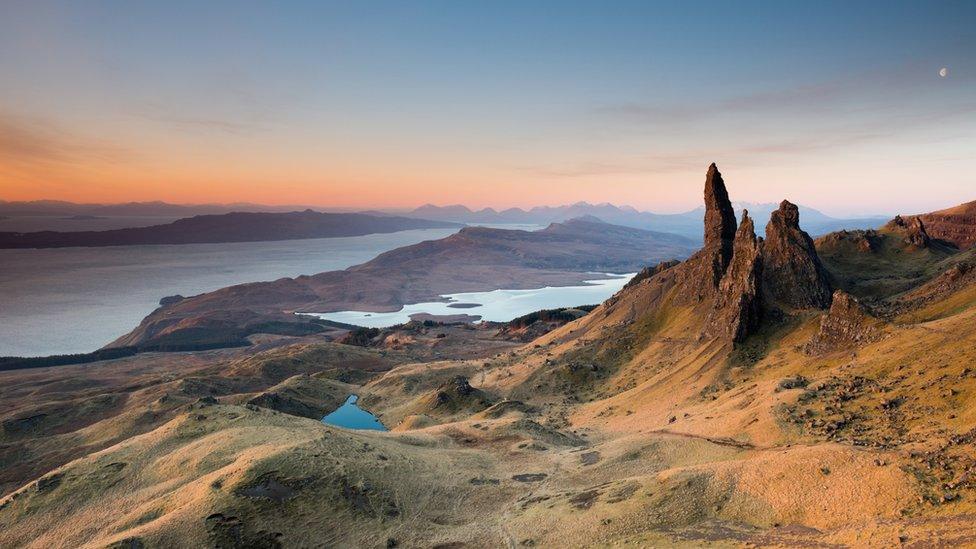
Welcome to Scotland's Jurassic Park.
Its dinosaurs might be long dead and no threat to puny humans, but Skye's rich fossil record has provided palaeontologists with important clues to the lives of prehistoric predators and their prey.
According to Dr Neil Clark, of the Hunterian Museum at the University of Glasgow, the Misty Isle's fossils include "very rare" dinosaur remains from the Middle Jurassic, a period of Earth's history still a mystery to scientists because of a shortage of fossil evidence from the time.
Eight years ago, scientists revealed that the earliest turtles known to live in water had been discovered on the island.
The 164 million-year-old reptile fossils were found on a beach at Cladach a'Ghlinne, on the Strathaird peninsula in southern Skye.
The new species, Eileanchelys waldmani, which translates as "the turtle from the island", formed a missing link between ancient terrestrial turtles and their modern, aquatic descendants.
Evidence of dinosaurs and ancient large reptiles from the Middle Jurassic and other periods have also been found on the island.
There are dinosaur footprints that can be seen on the beach at An Corran, Staffin, and also, at low tide, near Duntulm Castle in Trotternish.
Staffin Museum at Ellishadder, Staffin, also has the world's smallest dinosaur footprint in its fossil collection.
While you will not find the dinosaurs of Eilean a' Cheò (Gaelic for Skye) chewing on the scenery, the fossils have come under threat from rogue collectors.
In 2011, tonnes of rock were disturbed at a Jurassic site in what has been described as one of Scotland's most reckless acts of fossil collecting.
Rock was dug away from cliffs near Bearreraig Bay in an apparent organised search for valuable specimens.

A partnership between the University of Edinburgh, National Museums Scotland and energy company SSE has enabled the fossil to be extracted from the rock that encased it for millions of years.
The fossil was discovered on a beach near SSE's Storr Lochs Power Station by the facility's manager, Norrie Gillies, who died in 2011 aged 93.
It has been preserved in National Museums Scotland's storage facility for 50 years and now, by pooling expertise, the new collaboration will enable experts to form a clearer picture of the fossil.
A team of palaeontologists from the university and National Museums Scotland are preparing to carry out a detailed examination.
The scientists hope the study will help increase understanding of how ichthyosaurs evolved during the Middle Jurassic Period.
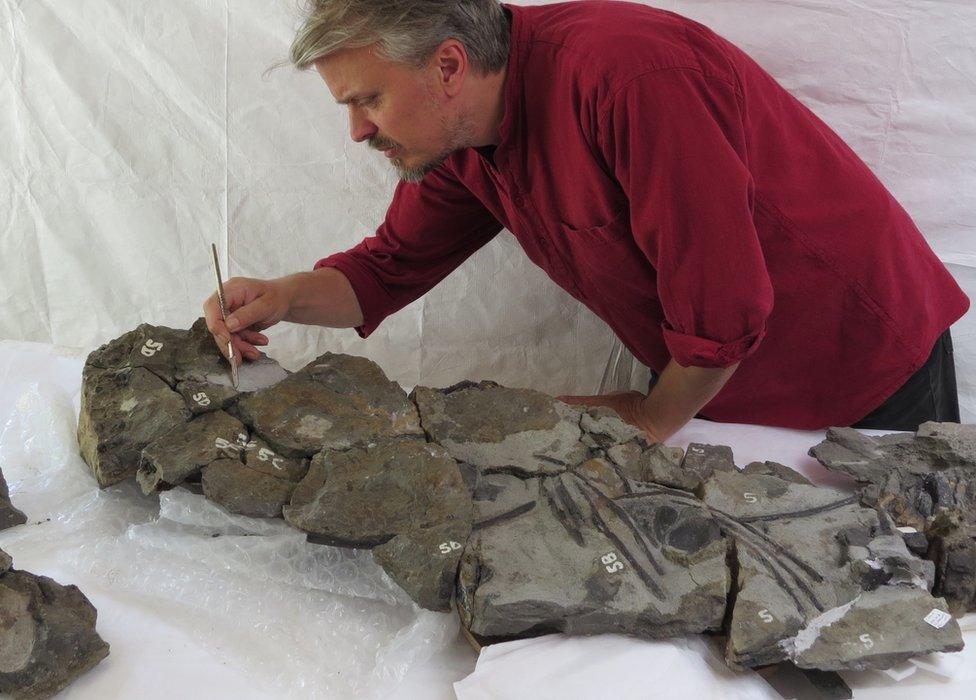
The fossil will eventually go on public display
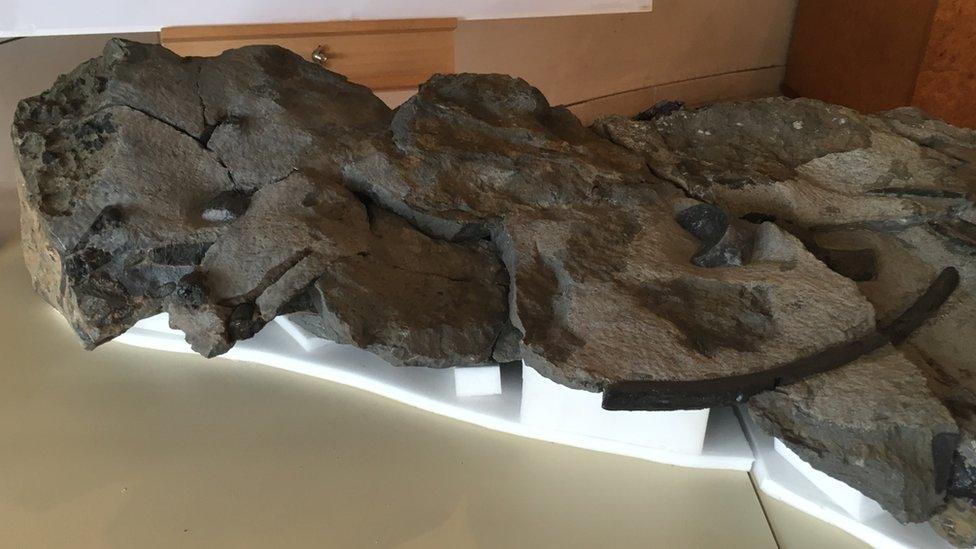
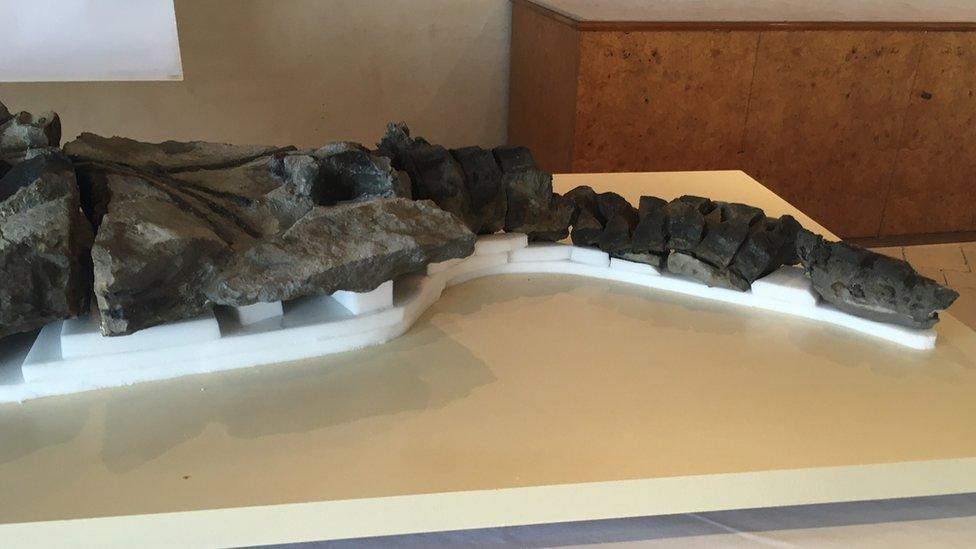
Once analysis of the fossil is complete, the public will have the chance to view it at a number of locations, including SSE's new visitor centre at the Pitlochry Dam in Pitlochry, which opens in a few months' time.
Dr Steve Brusatte, of the University of Edinburgh's School of GeoSciences, said: "Ichthyosaurs like the Storr Lochs Monster ruled the waves while dinosaurs thundered across the land.
"Their bones are exceptionally rare in Scotland, which makes this specimen one of the crown jewels of Scottish fossils.
"It's all thanks to the keen eye of an amateur collector that this remarkable fossil was ever found in the first place, which goes to show that you don't need an advanced degree to make huge scientific discoveries."
Dr Nick Fraser, keeper of natural sciences at National Museums Scotland, said: "The Storrs Loch Monster highlights the rich fossil heritage of Skye.
"Collaborations between scientists at National Museums Scotland, the University of Edinburgh and elsewhere in the UK are beginning to shed new light on the Middle Jurassic of Skye - a time when dinosaurs were dominant on land but mammals were also diversifying."
- Published12 January 2015
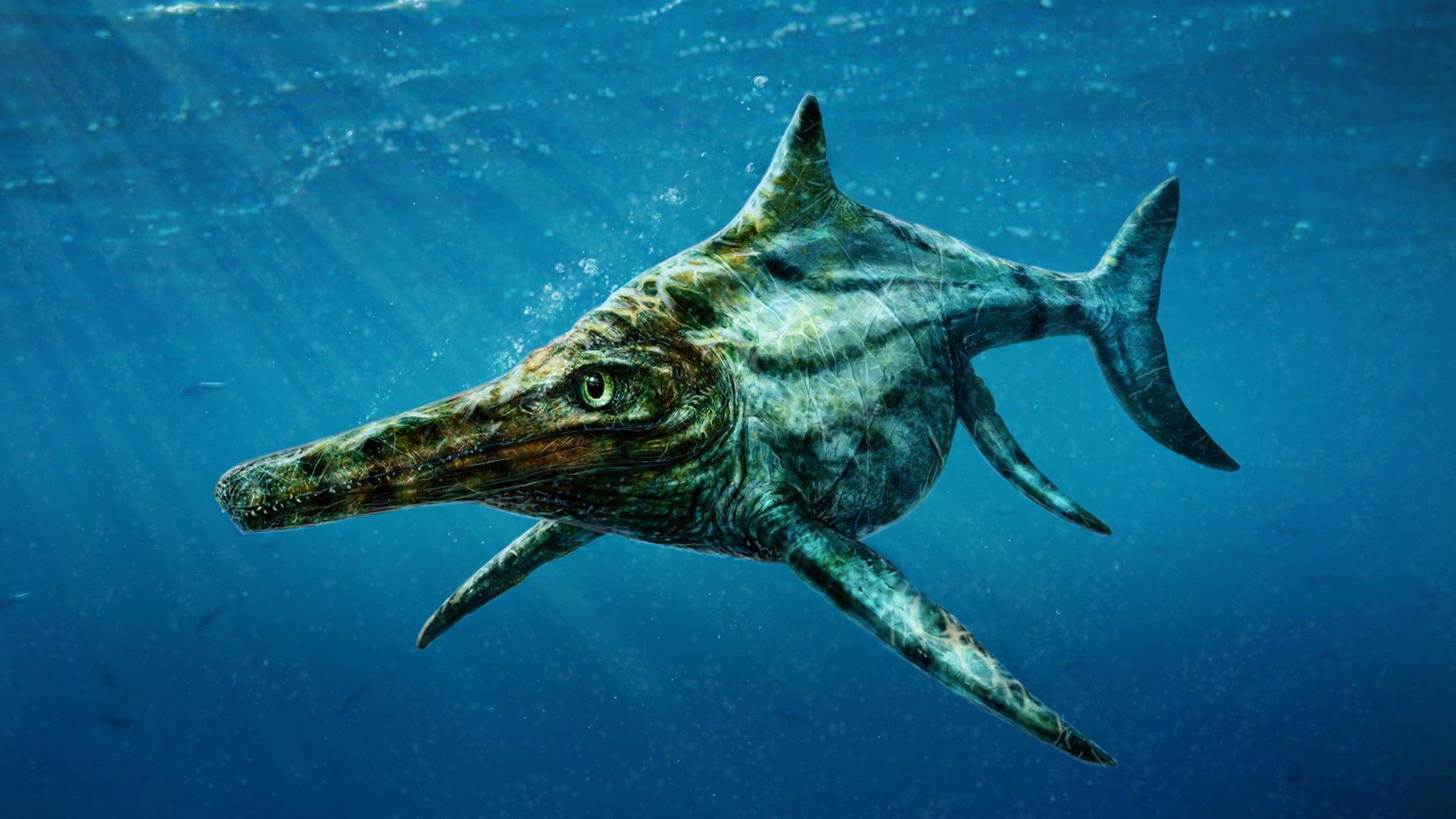
- Published21 May 2014

- Published28 September 2013
